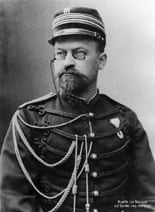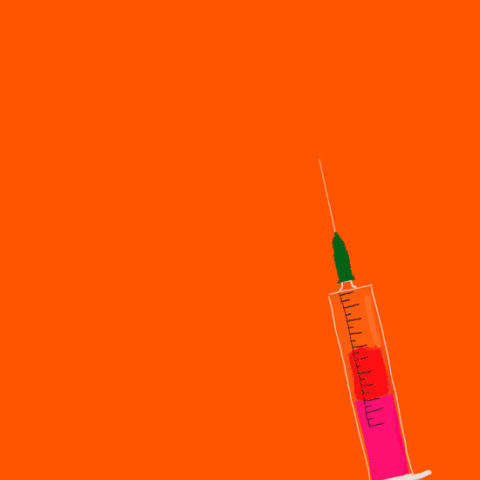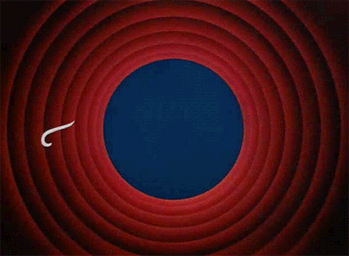History and Treatment of Malaria
We’ve gotten up close and personal with this parasite. We have learned how it maneuvers through the world and its genetic sequence. We were even able to see its display at the CDC Museum. But today we will go back even further. Where did this parasite come from? What vaccines are used to fight it? On our final end of this journey, we will conclude all of the lasting facts of Plasmodium falciparum.
History
Dating back to the earliest of phylogenetic studies P. Falciparum was shown to be clustered with two avian parasites (Durand et.al, 2011). This ultimately led to hypothesized results of this parasite possibly being transferred from birds to humans. Later studies showed that the sister taxon P. reichenowi is a parasite that was isolated from a chimpanzee, concluding a rather mammalian lineage (Durand et.al, 2011). Albeit this new finding was a more accurate representation, the two parasites were still considered as sister lineages of the parasites derived from lizards and birds.
How exactly did this mammalian switch occur? This is one of the greatest challenges while studying this phylogeny but the process has been broken down to the likely aspects and was schematized into 4 stages (Prugnolle, F., Durand, et.al, 2011).
The first two stages are required for the actual emergence to occur
1) a human contact with the infectious agent
2) the cross-species transmission.
Steps 3 and 4 are required for the pandemic developmental associations
3) sustained human-to-human transmission
4) genetic adaptation to humans
(Prugnolle, F., Durand, et.al, 2011)
Continuing with the transferal from the gorilla to human it is important to consider how exactly did these alleles survive the bottleneck origins of Plasmodium falciparum? It is unclear, but scientist have conducted some theories behind the thought. Sporozoites from the mosquito are haploid. The transmission from the gorilla to human has a possibility of occurring in a single event only if the oocytes (heterozygous) generated 2 types of sporozoites present in the same inoculum (Prugnolle, F., Durand, et.al, 2011).
For the discovery of malaria, we have Dr. Alphonse Laveran to thank for his pioneering work. He discovered it in 1880 at a hospital in Algeria, which was later named after him.

Dr. Alphonse Laveran, an army physician (Health Service of Armed Forces)
https://www.cdc.gov/malaria/about/history/laveran.html

https://www.cdc.gov/malaria/about/history/laveran.html
Vaccine
Plasmodium falciparum one of the deadliest forms of human malaria and because of its intricate complexities, it makes it very difficult to develop vaccines for the parasite. But there are some in the works one in particular known as the Phase 3 trial of RTS,S/AS01 is the vaccine-making its way around and under candidate review (WHO, 2017). What is a phase 3 trial? This happens to be a clinical test in which a new treatment has worked well in a previous trial (II). This phase goes further into the safety and overall effectiveness of the disease. According to the World Health Organization (WHO), there aren’t any commercial vaccines against malaria disease.

If you are ever in the Sub-Saharan area or any location where this disease is prominent here are a list of symptoms to be aware of
They are usually flu-like symptoms:
- Fever
- Chills
- Sweating
- Muscle pain
- Headaches
More severe symptoms that lean more towards the diagnosis of the disease:
- confusion,
- coma,
- neurologic
- focal signs
- severe anemia
- respiratory difficulties
A Malarial specific diagnostic test is available with routine chemistry and blood test.
Take all precautions and research thoroughly before traveling to a new country.

Interesting Facts
Did you know that the CDC was originally built in the efforts to help fight against Malaria?

Also:
As a kid at heart, I was excited to find out that Disney made an episode called The Winged Scourge which was the first animated series dealing with public health issues. The 7 dwarfs worked together to try to fight Malaria by killing the mosquitos. (Higgins, 2013) Episode Clip: Below
8 Presidents had Malaria
George Washington got the disease at the age of 17 and unfortunately reoccurred throughout the course of his life. Abraham Lincoln contracted the disease while as a child in Illinois. James Monroe contracted the disease while traveling on the Mississippi River. James Garfield contracted the disease in Ohio at the age of 16. John F Kennedy developed the disease during WWII while he was on the Solomon Islands. Theodore Roosevelt caught the disease while visiting the Amazon rainforest. This aggressive strain left him weakened upon his return to the United States. Andrew Jackson developed the disease also while on a military campaign. Ulysses S Grant lived on a farm on the outskirts of St. Louis where he contracted reoccurring cycles of the disease (Higgins, 2013)
Anopheles has finished her journey. Thanks for clicking in again to learn more about Malaria and Plasmodium falciparum. I hope you all enjoyed this blog as much as I did.

ooyewole2 April 28, 2019 - 10:27 pm
Malaria is truly one of the most devasting diseases out in the world, and I had no idea that so many presidents that contracted this illness from this deadly microbe. It really goes to show how dangerous Plasmodium Falciparum really is, and how so many people are around the world are impacted, not just in Africa.
Also, I love the appearance and visuals in your blog posts!
bdavis72 May 2, 2019 - 3:40 am
I found it very shocking to learn about all the presidents that were diagnosed with the disease as well as how young they were. It was also interesting to find out how the disease was able to manifest in them again in some instances. We have many more advances in our medicine and treatment options so I can’t imagine how it was to deal with that around that time period. Hopefully, we are able to control this disease all over the world. But Thank you! I am glad you enjoyed my blog :).
dhoang6 April 30, 2019 - 10:46 pm
There is an approved vaccine to prevent Malaria called Mosquirix that came out in 2005. However, I am not quite sure about the success rate. But there are some still in the works that have run trials with 100% efficiency.
Check it out https://www.sciencedaily.com/releases/2017/02/170215131606.htm
bdavis72 May 1, 2019 - 10:37 am
I learned that there was a successful vaccine that was recently released after I created this blog post. Ghana has already begun the works to vaccinate there children in the area. I think that this was a major win for the scientific community and future vaccine research.
cpresmy1 May 1, 2019 - 9:36 pm
I did my blog on malaria as well! Great minds think like. Even though I also blogged about malaria, I learned some new facts from your blogs. I had no idea that a few of our former presidents had malaria. I also liked that you included the Disney clip. The video was an enjoyable to understand how malaria is transmitted. I felt like the part in the video were the clip suggested to put oil in the water that mosquito lay their larva was problematic to the ecosystem but overall the video was interesting.
bdavis72 May 1, 2019 - 10:32 am
Hi! Yes, great minds do think a lot and I am glad you were able to learn some new things. The Disney clip was also new information to me, and being a big kid at heart I thought it would be great to share. I actually think that more animated cartoons and shows should work to implement more public health awareness every now and then. Haha, Oil would not be the best option and would harm the other species which would not be a good situation for anyone. There shouldn’t be a tradeoff that adverse in order to find a cure.